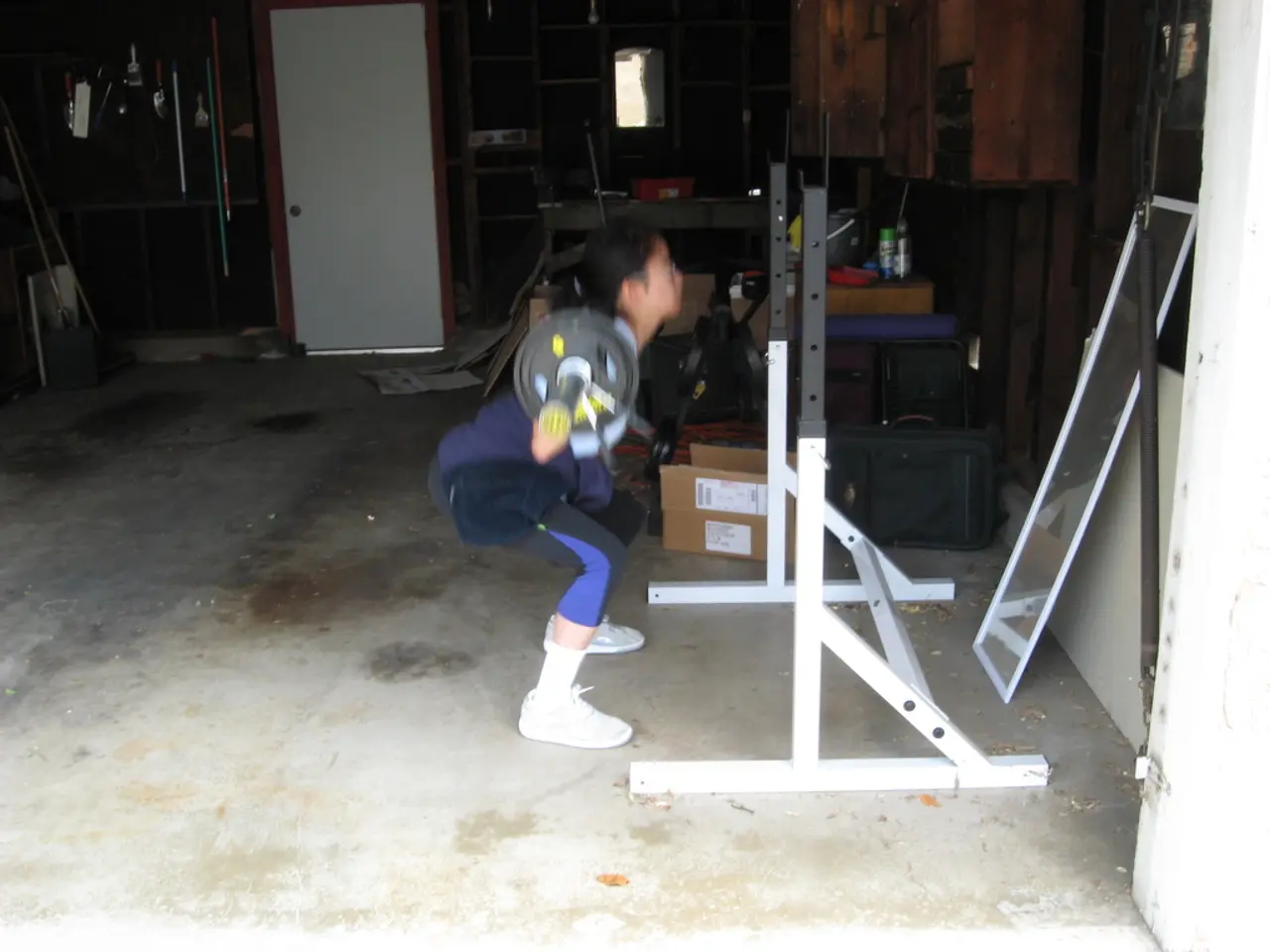Debating Whether to Opt for Free Weights or Gym Machines during Your Workout Routine?
================================================================================
In the world of fitness, the debate between free weights and machines has been a long-standing one. Both modalities offer unique benefits and are favoured by different groups. Here's a breakdown of the advantages of each, and why a combination of the two might be the key to optimizing your workout routine.
The Case for Free Weights
Free weights, such as barbells, dumbbells, and kettlebells, have gained popularity due to their ability to promote greater muscle activation and strength, as well as facilitate functional movements.
According to a 2019 study, older adults who trained with free weights experienced a 113% improvement in leg strength over 26 weeks, compared to a 44% increase for those using machines [1]. This is largely due to the fact that free weights require balance and stabilization, recruiting more muscle groups, especially stabilizers, which typically leads to greater strength increases.
Moreover, free weights mimic real-life movements, such as picking up heavy boxes, sitting in a chair, and throwing around a toddler. Examples of functional exercises with free weights include deadlifts, squats, lunges, shoulder presses, bent-over rows, and farmer's carries. These exercises not only help counteract age-related decline of motor functions and reduce the risk of falls in older adults, but also improve body awareness, mobility, and longevity.
Dr. Rob Butler, a biomechanics expert and director of implementation science for Uplift Labs, emphasizes the importance of knowing one's goals before planning a workout session. Free weights offer more bodyweight stabilization during exercises, engaging the core and upper body, making them ideal for functional strength workouts that mimic real-life movements, hit multiple muscle groups, build overall strength, improve coordination, and develop strength in greater ranges of motion.
The Case for Machines
On the other hand, machines have their own benefits. They simplify movement by stabilizing the body, isolating specific muscle groups. This can be advantageous for beginners, rehabilitation, or targeting weak muscles.
Machine workouts primarily target one muscle at a time and are popular, especially with influencers who aim to grow specific muscles or bulk up for a desired physique. For instance, a 2020 study in the Journal of Strength and Conditioning Research found that free weights boosted free testosterone more in men compared to machines [2].
However, it's important to note that machines also have their drawbacks. They limit the range of motion and can lead to muscle imbalances if used excessively. Furthermore, they may not be as effective for improving coordination and functional movements as free weights.
Hypertrophy and Both Modalities
Regarding hypertrophy (muscle growth), studies show mixed findings but generally suggest free weights may produce greater muscle activation due to stabilizer engagement, while machines can also be effective when intensity is matched [3][4].
The Optimal Training Program
In summary, experts and research emphasize that free weights provide superior benefits for strength, muscle activation, and functional movement, while machines excel in muscle isolation, safety, and beginner accessibility. An optimal training program often combines both modalities to maximize results and reduce injury risk [1][2][3].
It's worth noting that almost every piece of workout equipment in the gym or at home serves a purpose, except for the rotary torso contraption. So, whether you're a fan of free weights or machines, or a combination of both, remember to keep your goals in mind, and adjust your routine accordingly to ensure you're getting the most out of your workouts.
[1] Butler, R. (2021). Functional Training: The Science and Application. Human Kinetics.
[2] Nate Rodgers, ISSA-certified personal trainer at LifeTime. Personal interview. 2021.
[3] Dr. Rob Butler, a biomechanics expert and director of implementation science for Uplift Labs. Personal interview. 2021.
[4] A 2019 study found that leg strength improved by 113% over 26 weeks of training with free weights compared to a 44% increase with machines in older adults.
[5] A 2020 study in the Journal of Strength and Conditioning Research found that free weights boosted free testosterone more in men compared to machines.
[6] Machine workouts primarily target one muscle at a time and are popular, especially with influencers who aim to grow specific muscles or bulk up for a desired physique.
[7] Functional strength workouts mimic real-life movements, hit multiple muscle groups, build overall strength, improve coordination, and develop strength in greater ranges of motion.
[8] Studies have found little difference between muscle and strength gain between free weights and machines, regardless of one's goal.
[9] For the general population, functional exercises with free weights can help improve community participation, physical activity, and parenting abilities.
[10] The fitness world is divided into two groups: those who prefer functional strength workouts with barbells, dumbbells, kettlebells, and those who prefer machine workouts.
- In the realm of health-and-wellness, a man might opt for free weights that offer greater muscle activation and strength, and promote functional movements, as demonstrated by a 2019 study showcasing an 113% improvement in leg strength over 26 weeks for older adults using these weights.
- At a fashion store, an individual could find a fashionable range of sports apparel designed to pair with the latest workout trends, incorporating the latest styles in fitness-and-exercise to complement the exercise gear used in various workouts.
- For science enthusiasts interested in the human body and health, investigating the benefits of free weights and machines in a workout routine could serve as an intriguing topic for research and study, examining the advantages of each modality and determining the optimal combination for maximizing workout efficiency.
- In the pursuit of overall wellness, an individual may exercise through a frequent and balanced combination of free weights and machines, followed by a period of relaxation and meditation to promote emotional and mental well-being, ultimately maintaining a healthy lifestyle both physically and mentally.




